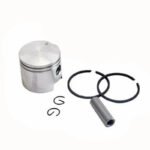
Farming is the backbone of Sri Lanka’s economy, and for plantation managers, estate owners, and farmers, maximizing efficiency is key to success. Whether you’re managing a tea estate, rubber plantation, or a small farm, working with minimal equipment doesn’t mean compromising on productivity. With the right strategies, you can optimize resources, reduce costs, and achieve impressive yields.
In this article, we’ll explore 10 practical tips for efficient farming with minimal equipment, tailored specifically for Sri Lankan farmers and plantation managers. Let’s dive in!
1. Plan and Prioritize Your Farming Activities
Efficient farming starts with a solid plan. Without proper planning, resources like time, labor, and materials can easily go to waste. Here’s how to get started:
- Create a Crop Calendar: Map out planting, harvesting, and maintenance schedules to avoid overlaps and missed opportunities.
- Prioritize Tasks: Focus on high-impact activities like soil preparation and pest control during peak seasons.
- Use Technology: Simple tools like mobile apps or spreadsheets can help you track progress and stay organized.
By planning ahead, you can make the most of your limited resources and ensure smooth operations throughout the year.
2. Leverage Manual Tools for Precision Work
While heavy machinery can save time, manual tools are often more cost-effective and precise. Here are some essential tools every farmer should have:
- Hoes and Sickles: Perfect for weeding and harvesting.
- Pruning Shears: Ideal for maintaining tea bushes and rubber trees.
- Hand Rakes: Great for soil preparation and clearing debris.
These tools are affordable, easy to maintain, and don’t require fuel or electricity. Plus, they allow for greater control, especially in smaller or unevenly shaped plots.
3. Optimize Soil Health Naturally
Healthy soil is the foundation of a successful farm. Instead of relying on expensive fertilizers, try these natural methods:
- Composting: Turn organic waste into nutrient-rich compost.
- Mulching: Use leaves, straw, or grass clippings to retain moisture and suppress weeds.
- Cover Cropping: Plant legumes or other cover crops to improve soil fertility and prevent erosion.
These techniques not only save money but also promote sustainable farming practices.
4. Implement Water-Saving Techniques
Water is a precious resource, especially in Sri Lanka’s dry zones. Here’s how to use it wisely:
- Drip Irrigation: Deliver water directly to plant roots, reducing waste and evaporation.
- Rainwater Harvesting: Collect and store rainwater for irrigation during dry spells.
- Mulching: As mentioned earlier, mulching helps retain soil moisture.
By conserving water, you can reduce dependency on pumps and other costly equipment.
5. Use Multi-Purpose Equipment
Investing in versatile tools can save both money and storage space. Consider these options:
- Hand Tractors: These small machines can plow, till, and transport goods.
- Multi-Functional Attachments: Look for tools that can perform multiple tasks, like weeding and planting.
- Manual Seeders: These devices ensure even seed distribution without the need for large machinery.
Multi-purpose equipment is a game-changer for farmers working with limited resources.
6. Adopt Integrated Pest Management (IPM)
Pests can wreak havoc on crops, but chemical pesticides are expensive and harmful to the environment. Instead, try these IPM strategies:
- Companion Planting: Grow pest-repellent plants alongside your main crops.
- Biological Controls: Introduce natural predators like ladybugs to control pest populations.
- Traps and Barriers: Use physical barriers or traps to keep pests away.
IPM reduces the need for expensive pesticides and protects your crops in an eco-friendly way.
7. Maximize Labor Efficiency
Labor is one of your most valuable resources. Here’s how to make the most of it:
- Task Delegation: Assign specific tasks to workers based on their skills and experience.
- Training: Provide regular training to improve efficiency and reduce errors.
- Scheduling: Create a daily or weekly work schedule to ensure all tasks are completed on time.
By organizing your workforce effectively, you can achieve more with fewer people.
8. Focus on High-Value Crops
Not all crops are created equal. Some offer higher profits with less effort. Consider growing:
- Tea and Rubber: These are staple crops in Sri Lanka with strong market demand.
- Spices: Cinnamon, pepper, and cardamom are lucrative options.
- Fruits and Vegetables: Mangoes, papayas, and leafy greens are always in demand.
Focusing on high-value crops can maximize your income while minimizing resource use.
9. Utilize Local Resources and Knowledge
Sri Lanka has a rich agricultural heritage, and local knowledge can be incredibly valuable. Here’s how to tap into it:
- Local Materials: Use bamboo, coconut husks, and other locally available materials for fencing, mulching, and more.
- Traditional Techniques: Learn from experienced farmers about time-tested methods for planting, irrigation, and pest control.
- Community Collaboration: Work with neighboring farms to share resources and knowledge.
By leveraging local resources, you can save money and support sustainable farming practices.
10. Regularly Maintain and Repair Equipment
Even minimal equipment requires care. Regular maintenance can extend the life of your tools and prevent costly breakdowns. Follow these tips:
- Clean Tools After Use: Remove dirt and debris to prevent rust and damage.
- Inspect Regularly: Check for wear and tear, and replace or repair parts as needed.
- Store Properly: Keep tools in a dry, secure place to protect them from the elements.
A little maintenance goes a long way in ensuring your equipment lasts for years.
Conclusion
Efficient farming with minimal equipment is not only possible but also highly rewarding. By planning strategically, using the right tools, and optimizing resources, you can achieve impressive results without breaking the bank. Whether you’re managing a large plantation or a small farm, these 10 tips will help you maximize productivity and sustainability.
For affordable farming tools and equipment, visit Lakparts.com to find everything you need to support your farming journey.




